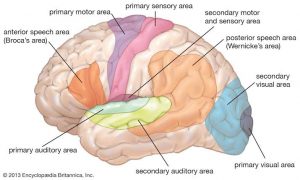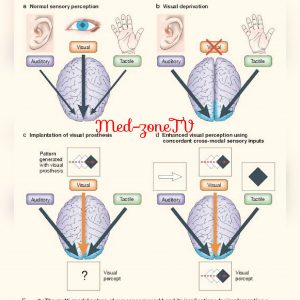The eye perceive vision, the ear sound, the nose smell and the tongue taste. With your knowledge of the functionalities of these senses, give your account of the adaptive changes to the senses of hearing and smell when the senses of vision and taste are damaged.



The ability of the brain to reorganize and make functional changes to compensate for a sensory deficit is called Cross modal plasticity. It is the adaptive reorganisation of neurons to integrate the function of two or more sensory systems after sensory deprivation. The sensory organs may become damaged as a result of injury or variants of factors. When this happens, the brain has the ability to readjust and reorganize affected sense to heighten the senses left, i.e in the case of this question asked, the brain can easily adjust or reorganise cerebral areas of the brain previously known to control vision and taste to match and greatly indebted to highten audition and smell. The strengthening is due to new connections that are formed to brain cortices that no longer receive sensory input.
This begs the Question when and how does cross modal plasticity occur?
The exact mechanism behind cross modal plasticity is not fully understood, but scientist believes that the area of the brain that becomes defective following damage to a sense organ adapts over time to take over and assist function of senses still left (Smell and audition). This helps heighten the ability of such individual to smell and hear. It is important to note that this sensory organ soon commandeer this area/region of the cortex so that even after a corrective surgery is performed to restore sight and taste, the Individual may be unable to utilize these senses.
The timing of injury matters alot. Cross modal plasticity is easier to occur in children and younger individual as compared to adults. At a younger age, an individual is in the process of mastering his/her senses thus when there is damage to areas of these sense, the brain can easily modify the senses to better suit the remaing senses.
This is nice..
Thank you🙂
Nice piece
Thanks for this
Neurons create new connections to cover for a faulty activity that neuroplasticity at play. I am very interested in knowing the mechanism